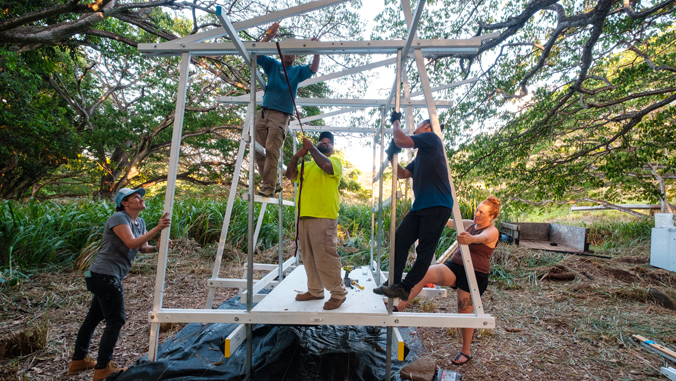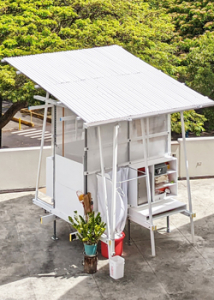
University of Hawaiʻi at Mānoa School of Architecture students and the Hawaiʻi Emergency Management Agency (HI-EMA) collaborated to create a temporary shelter prototype to provide housing for people in need of shelter after a natural disaster.
Hawaiʻi’s remote location and fragile supply chain make it difficult to ship in supplies to provide temporary shelter for after a disaster strikes, such as a hurricane, tsunami or earthquake. UH Mānoa architecture students designed “Wiki Hale,” a structure that is quick to build, easy to store and uses inexpensive materials.
The full-scale prototype was built for $2,500 using unistruts (metal framing system), lumber, plastic panels, bolts and a coated roof, and can be constructed using only a wrench. Wiki Hale includes a sleeping area for up to two people, a small kitchen, bath area, workstation and storage.

“The lack of post-disaster housing in Hawaiʻi is concerning, and we hope Wiki Hale will be a catalyst towards raising awareness surrounding emergency preparedness,” said Karolyn Jones, an architecture student who worked on the project. “There is also potential for this project to serve houseless communities in Hawaiʻi.”
Seventeen students enrolled in Arch 201 spent the fall 2021 semester designing and building the prototype. Wiki Hale could eventually be assembled in linked clusters to form communities with shared kitchen spaces and to house residents for weeks or months during recovery from a major disaster.
“Design-build projects like Wiki Hale provide important opportunities for architecture students because they help students understand how design can create a positive impact on society,” said Jones. “This project is also important because it is a way for students to connect with the community. For myself and my classmates, it was the first time we worked with a client to address a real-world problem.”
UH plans to further develop Wiki Hale to create more options and configurability.
“The ability to learn by hands-on design and construction and understanding how to approach and execute a real design project with a program and client is an important opportunity for our students,” said Bundit Kanisthakhon, an assistant professor in the School of Architecture.

